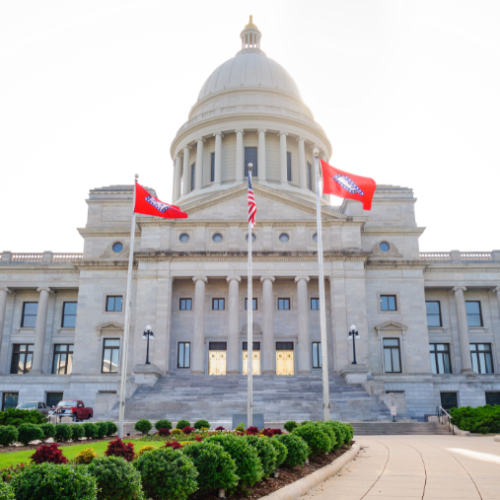Connecticut To Be Recognized by President Obama at State of the Union Address
As of January 2016, the number of people incarcerated in Connecticut correctional facilities was the lowest it’s been in 21 years, with the sentenced population dropping to 11,706, a number which has fallen in tandem with crime rates, according to recent data from the Bureau of Justice Statistics.
These numbers align with a trend that has been happening in the state for years. From January 2010 to January 2016, the Connecticut prison population decreased more than 14.1 percent, the second largest decline in any state during that time, trailing only California. Simultaneously, the overall crime rate in the state dropped 12.7 percent from 2010 to 2014 (the latest data available). This progress will likely be acknowledged by President Obama during his final State of the Union address on Tuesday, Jan. 12, where Connecticut Gov. Dannel P. Malloy (pictured left) will be one of the First Lady’s 24 guests.
“Their stories—of struggle and success—highlight where we have been and where America is going in the future, building on the best of what our country has to offer,” according to a statement from the White House. “The guests personify President Obama’s time in office and, most importantly, they represent who we are as Americans: inclusive and compassionate, innovative and courageous.”
Criminal justice reform figures to play a key role in the president’s speech on Tuesday, which will serve as the latest in a collection of public statements from the president about the need to re-think the country’s approach to non-violent crimes and insisting more be done to help previously incarcerated people reenter society.
“In talking about how to reduce spending on corrections and draw on the latest research, the Obama Administration and Republican leaders in Congress, alike, agree that state governments are leading the way, ” said Michael Thompson, director of The Council of State Governments (CSG) Justice Center. “It’s great to see the president single out Connecticut, where the twin reductions of crime rates and incarceration rates are ones that almost no other states have achieved.”
In 2000, a statewide budget shortfall in Connecticut led to cuts to probation services. With fewer probation officers to supervise individuals in the community, the state saw a surge in the prison population as revocations increased. In 2004, 19,000 people were incarcerated in Connecticut prisons—about 2,000 people over its prisons’ capacity—the result of more than two decades of policies and practices that sent more individuals to prison for longer periods of time.
Faced with overcrowding and the prospect of spending millions of dollars on new correctional facilities, policymakers in Connecticut developed solutions to improve parole, reduce probation revocations, and bolster reentry services utilizing a consensus-based, data-driven “justice reinvestment” approach, becoming the first state in the country to do so.
“In Connecticut, the fact that we put the [justice reinvestment] theories to the test, and they actually worked, allowed us to continue to take some of these savings and reinvest them into the very programs that are working,” said Mike Lawlor, undersecretary of Criminal Justice Policy and Planning for Gov. Malloy and a state representative when the justice reinvestment reforms were first enacted. “Here, I think people came to realize that if you don’t properly fund the kinds of tactics that have proven to be effective, you will lose good results very quickly.”
The reforms were followed by a steady decline in the state’s prison and jail population until 2007, when two parolees invaded a Cheshire, Connecticut, home and gruesomely killed three people. The incident prompted increased restrictions on the parole release process, causing the incarcerated population to jump 2.8 percent to an all-time high of 19,438. Recognizing the consequences of the population influx, state legislators returned to an approach that focused on evidence-based solutions in 2008, adopting policies that reduced corrections spending and reinvested those savings in substance use treatment, housing, and employment assistance for people transitioning from incarceration to the community. The reforms reversed increases in violent crime, property crime, and the prison population, which have continued to fall.
To continue the momentum started by justice reinvestment policies enacted in 2004 and 2008, in June 2015 Gov. Malloy signed into law the Second Chance Society bill, which aimed to reduce the number of people going into prison and eliminate barriers for people preparing to reenter their communities from incarceration. The bill—backed by strong bipartisan support—eliminates mandatory minimum sentences for drug possession, reclassifies drug possession from a felony to a misdemeanor, and expedites pardons and parole hearings for people convicted of nonviolent crimes.
That bipartisanship was been a theme in Connecticut’s reform process, and is a cornerstone of all effective justice reinvestment policies, said Lawlor, who also serves as chair of the CSG Justice Center.
“There’s a lot of state-versus-federal pushing and shoving in other policy areas,” he added. “[With criminal justice reform], it seems like people are coalescing. There’s value in it for everybody.”
New Hampshire Department of Corrections Commissioner Helen Hanks presents at the Medicaid and Corrections Policy Academy in-person meeting.
Read More Meet the Medicaid and Corrections Policy Academy Mentor States
Meet the Medicaid and Corrections Policy Academy Mentor States
New Hampshire Department of Corrections Commissioner Helen Hanks presents at the Medicaid…
Read More Key Findings and Recommendations from Kentucky’s Justice Reinvestment Initiative to Better Understand and Address Domestic Violence
Key Findings and Recommendations from Kentucky’s Justice Reinvestment Initiative to Better Understand and Address Domestic Violence
Almost half of all violent crime in Kentucky is rooted in domestic…
Read More Explainer: Key Findings and Options from Arkansas’s Justice Reinvestment Initiative
Explainer: Key Findings and Options from Arkansas’s Justice Reinvestment Initiative
Arkansas policymakers have long expressed concerns about the state’s high recidivism rate.…
Read More












